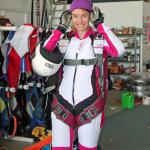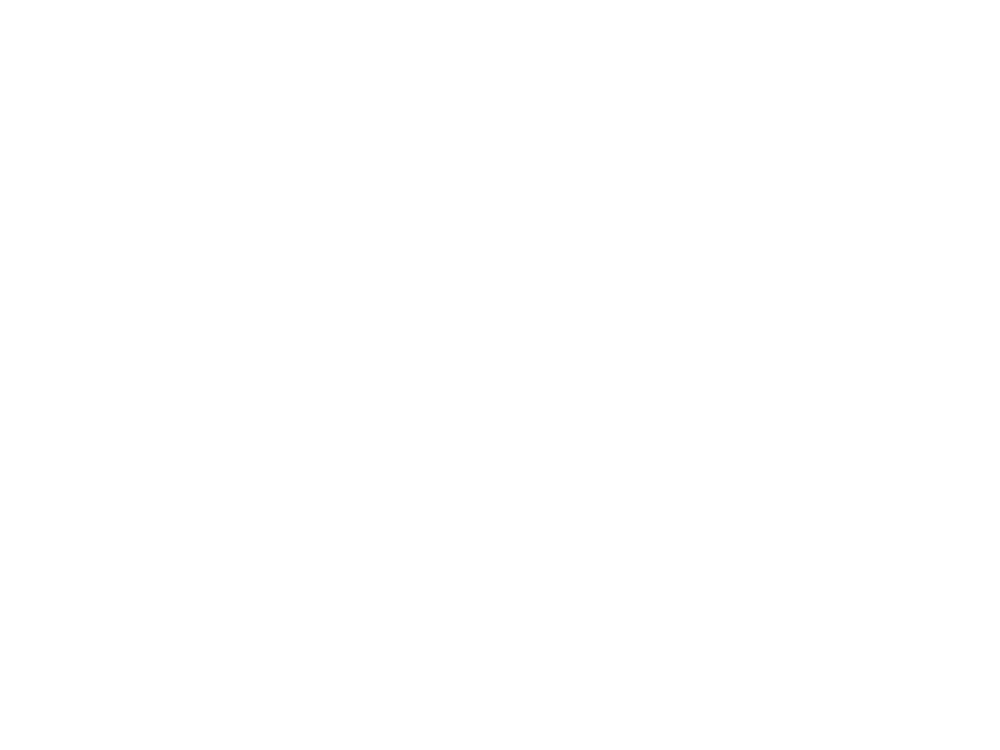Recommended Posts
QuoteYes, altitudes should be predetermined/figured out. You adjust positioning over the ground, not pattern altitudes to deal with varying conditions.
Explain, please.
Scenario: Honking winds 1K to ground. You may define 'honking' however you like but the thread is about young jumpers...so apply it to students and low wing loadings.
I think we're all Bozos on this bus.
Falcon5232, SCS8170, SCSA353, POPS9398, DS239
DocPop 1
Quote
Pretty fucking presumptuous of you. Go Away.
Damn, shame on me. I thought you "had it" there for a while. I see you really have no clue about me.
Maybe I did not explain myself adequately or maybe I misunderstood what you are saying, and you're right, I don't know you. However, you are not hearing what I am saying.
By planning a pattern and utilizing various techniques, it is possible to fly a predictable (i.e.. non-erratic) pattern while still adjusting for human error, wind etc and hitting your canopy checkpoints - both location and altitude.
It's not easy and it takes a lot of practice which is why most people can't be bothered to do it. For me it is an enjoyable challenge and an essential part of canopy piloting and setting up for a high performance landing.
For you to tell me that it can't be done says more about you than it does me. And just because you have been teaching students for years doesn't mean you've been teaching them the right/best way. This is not meant as a knock to you, but you are coming across as very resistant to learning/teaching modern CP techniques.
Please reconsider your attitude. It is starting to come across as an instructor version of the "mad-skillz" that I know you hate in young jumpers. It is possible that there is more than you could learn about canopy piloting.
~ CanuckInUSA
DocPop 1
QuoteOf course he is...he has no clue...
It's really quite staggering that you can make this statement, and then follow it up with this:
QuotePresumptuous: too bold or forward; taking too much for granted; showing overconfidence, arrogance, or effrontery
Kindly explain your solid, non-presumptuous reasons for stating that I have "no clue" about this topic.
~ CanuckInUSA
QuoteBy planning a pattern and utilizing various techniques, it is possible to fly a predictable (i.e.. non-erratic) pattern while still adjusting for human error, wind etc and hitting your canopy checkpoints - both location and altitude.
That's a given. I don't recall anyone saying anything to contradict that. That's been a known for like, forever. We teach students that.
QuoteFor you to tell me that it can't be done.....
What????
Show me. Show me where anyone said that.
QuoteAnd just because you have been teaching students for years doesn't mean you've been teaching them the right/best way.
True. But what do you know about that?
That's applicable to everyone. God doesn't teach skydiving.
QuoteThis is not meant as a knock to you, but you are coming across as very resistant to learning/teaching modern CP techniques.
You've already shown numerous times that you are having a hard time comprehending what people are saying. You've done it again. I've made over 28 posts here. You show little to no comprehension of what is being said. I believe you are being intentionally obtuse...hence the Go Away that you ignored.
You have a history of making nebulous accusations. Be specific. Show me what justifies you saying that. You're wrong.
QuotePlease reconsider your attitude. It is starting to come across as an instructor version of the "mad-skillz" that I know you hate in young jumpers.
You are correct. I'm letting ignorant statements from people who cannot comprehend what is being said get to me. Chill pill ready.
QuoteIt is possible that there is more than you could learn about canopy piloting.
True. We're always learning...hopefully.
I think we're all Bozos on this bus.
Falcon5232, SCS8170, SCSA353, POPS9398, DS239
QuoteQuoteOf course he is...he has no clue...
It's really quite staggering that you can make this statement, and then follow it up with this:QuotePresumptuous: too bold or forward; taking too much for granted; showing overconfidence, arrogance, or effrontery
Kindly explain your solid, non-presumptuous reasons for stating that I have "no clue" about this topic.
QuoteIt would be good for you to sit in on a basic canopy course where this is all explained.
Your statement was directed at me, not the topic.
You have no clue about me, what I do, where I come from, my background, history or the color my hair...see what I mean about comprehension?
I'll make a confession...I don't have 10000000 jumps nor have I been in the sport for 999999999999 years.
I think we're all Bozos on this bus.
Falcon5232, SCS8170, SCSA353, POPS9398, DS239
I think we're all Bozos on this bus.
Falcon5232, SCS8170, SCSA353, POPS9398, DS239
- It's not good for them, nor experienced jumpers, to depend on that when they get out on their own. They must develop judgement skills that will help them in all jumpable atmospheric conditions, at new DZs and in emergency-landing situations.
Just that simple.
If you understand that, it's beyond me how anybody could argue with it.
I think we're all Bozos on this bus.
Falcon5232, SCS8170, SCSA353, POPS9398, DS239
JackC1 0
QuoteQuote
QuoteIt would be good for you to sit in on a basic canopy course where this is all explained.
Pretty fucking presumptuous of you. Go away.
Damn, shame on me. I thought you "had it" there for a while but I see you really have no clue.
DocPop isn't being presumptuous, nor do I think he's trying to insult you.
You should attend canopy coaching, especially if you're coaching students. All skydivers should, imo.
Ian
^This.
Nigel 0
QuoteQuoteQuoteLet me rephrase, then.
You should move your pattern downwind to accomodate for overshooting. You should not change your altitudes. Leave your altitudes alone, so that in the air you're always flying the same pattern. Just slide the points across the ground. Good altitudes to use are 300, 600, and 900. Some use 1000, 500, and 250. I like 3/6/9 because they're the same amount of altitude loss per leg, so on no-wind days they cover the same distance across the ground.
I like the 300/600/900ft reference altitudes...I'm going to try that next jump.
When you're trying it out, note the amount of time you get in full flight from the last turn to flare.
You want at least 10 seconds - if you don't get that, you should take your altitudes up.
Understood DocPop. Thx, Nigel
DocPop 1
QuoteQuoteFor you to tell me that it can't be done.....
What????
Show me. Show me where anyone said that.
I'll just reply to this one request for information from you and then I am done. You stated that the system I outline would not work here:
Quote-Oooops...faster than I thought! Now I have to fly upwind to adjust so I can turn at 600 ft at the right place? Oh, I could do S-turns or 360s to burn altitude....oh wait.
-Oooops.. slower than I thought...I'm not gonna get to the next turning point by 600 ft. Oh shit.....drainage ditch here I come!
Good luck with your pre-designated altitudes and turning points. Why depend on tools that are quite likely to get you in trouble?
I can explain this to you in person, but I just can't seem to get you to understand here.
~ CanuckInUSA
Quote
^This.
Trees/forest....wake up
I think we're all Bozos on this bus.
Falcon5232, SCS8170, SCSA353, POPS9398, DS239
QuoteI'll just reply to this one request for information from you and then I am done. You stated that the system I outline would not work here:
Quote-Oooops...faster than I thought! Now I have to fly upwind to adjust so I can turn at 600 ft at the right place? Oh, I could do S-turns or 360s to burn altitude....oh wait.
-Oooops.. slower than I thought...I'm not gonna get to the next turning point by 600 ft. Oh shit.....drainage ditch here I come!
Good luck with your pre-designated altitudes and turning points. Why depend on tools that are quite likely to get you in trouble?
I can explain this to you in person, but I just can't seem to get you to understand here.
You indeed may have something that I missed. I don't think so but....
On the one hand you speak of pre-designated spots and altitudes and don't understand how this applies:
Quote- 1000-600-300 (as a generality) is good for students to help get them down safely. We help protect them from much of the problems by restricting them on atmospheric conditions
.....and then you said....
"Your scenarios about what if I am too high or too low are perfectly manageable by extending/shortening the legs of the pattern or flying in more or less brakes.
There is always a need for using judgement,...."
Which acknowledges the need for good judgement and agrees with what I said. Maybe you're just needing to hear that your "system" works. It's already been said that it does in a perfect world. I think you saw that and are just trolling.
Your advice about the seconds-altitude loss check is good though. I'd give it more time for the check but there you go.
Edited to add:
And here's why....ten seconds is not going to show much of a change on students altimeters. If they have an analogue one, they'll probably not be able to notice any change at all. Yes, I did notice you said "at least". YMMV
G'day, sir.
I think we're all Bozos on this bus.
Falcon5232, SCS8170, SCSA353, POPS9398, DS239





.thumb.jpg.4bb795e2eaf21b8b300039a5e1ec7f92.jpg)
Of course he is...he has no clue...
Presumptuous: too bold or forward; taking too much for granted; showing overconfidence, arrogance, or effrontery
You, OTOH are being overly assuming. I'll not argue with you Ian.
Oh, and reality strikes again. While I agree that everyone should take a canopy course, canopy courses are not the glorified panacea everyone thinks they are.
Ask Tim Tom
(
I teach students basic canopy flight. I teach my students almost exactly the same things you do in your 101 class with the exception of sending them out farther for long-spot recovery. The only differences that I have seen is your teachings for long-spot recovery are a little different than mine and we've had that discussion already. I've been doing so since long before you started your canopy courses. My first mentors on that were a couple of people you know. My practice has shown me good techniques that have saved my butt on several occasions.
I've put up 27 posts prior to this one. Have you read them? Tell me what you disagree with...before you leap, make sure you understand what I've been saying.
I think we're all Bozos on this bus.
Falcon5232, SCS8170, SCSA353, POPS9398, DS239
Share this post
Link to post
Share on other sites